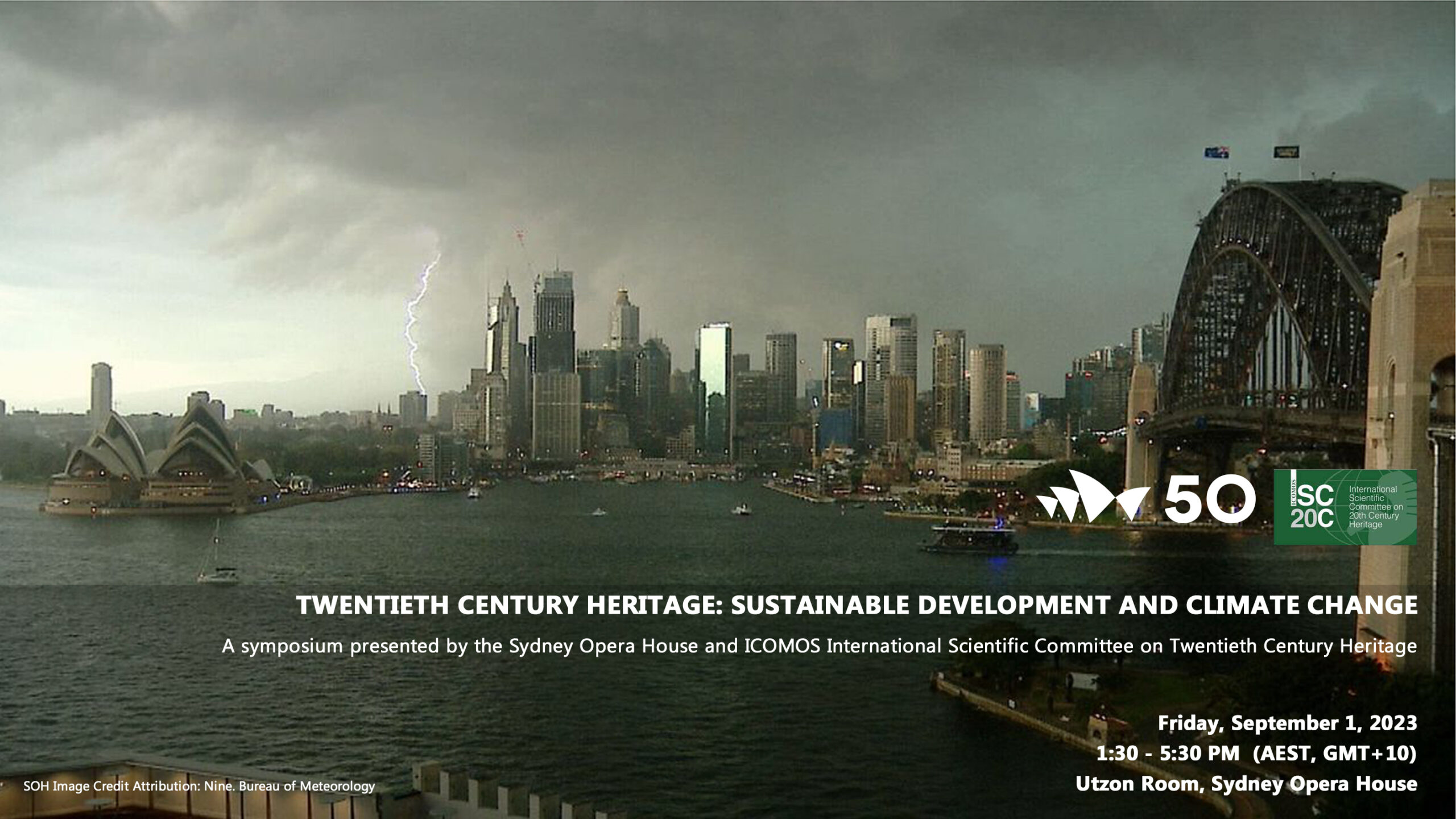2023 Scientific Symposium - Twentieth Century Heritage: Sustainable Development and Climate Action
Hosted by: Sydney Opera House and ICOMOS International Scientific Committee on Twentieth Century Heritage
Date: Friday, September 1, 2023
Time: 1.30 pm – 5 pm (AEST, GMT+10)
Venue: Utzon Room, Sydney Opera House, Click here for access details (highlighted in yellow)
Inclusions: Afternoon refreshments (coffee, tea)
This half day symposium hosted by the ICOMOS ISC Twentieth Century, and the Sydney Opera House aims to discuss the role of conserving modern heritage in achieving sustainable development goals and climate change action. Given much of the world’s-built environment dates from the second half of the twentieth century, this heritage has also been associated with a period of unprecedented environmental, social, cultural, and economic change – sometimes described as the Great Acceleration.
How does its conservation contribute to global sustainable development goals and climate change action? Is it part of the solution or part of the problem? This symposium initiates the ISC20’s investigation of these issues with a view to developing its own program of work for the next triennial. Join us to hear about ICOMOS International efforts in relation to sustainability and climate change. Speakers hail from leading organizations at the forefront of sustainability and climate change action management and learn about the Sydney Opera House’s operationalization through its own Environmental Sustainability and Action Plan.
PROGRAM
1.00 – 1.30 pm
Participants start arriving for the symposium
1.30 – 1.35 pm (5 min)
Acknowledgement of Country, Welcome by the Sydney Opera House and Housekeeping
Laura Matarese, Heritage Manager Sydney Opera House
1.35 – 1.45 pm (10 min)
Introduction to Symposium
Susan Macdonald and Grethe Pontoppidan, ISC20C Co-Presidents
1.45 – 1.50 pm (5 min)
Update on ICOMOS Climate Group – aims and objectives, and priorities, and the ICOMOS Triennial
Will Megarry, Focal Point, ICOMOS Climate Action Working Group
1.50 – 2.15 pm (25 min)
Keynote 1: Conservation and the Climate Crisis Nexus
Dr Caroline Noller
2.15 – 2.35 pm (20 min)
Keynote 2: Can Early 20th Century Buildings Contribute to Carbon Reductions
Peter Cox
2.35 – 2.50 pm (15 min)
Keynote 3: Environmental Sustainability at the Sydney Opera House
Emma Bombonato, SOH Sustainability manager
2.50 – 3.00 pm (10 min)
Q & A
Moderated by Susan Macdonald and Grethe Pontoppidan
3.00 – 3.20 pm (20 min)
Coffee and Tea Break
3.20 – 3.25 pm (5 min)
Introduction to Lightening Round Session
Laura Matarese
3.25 – 4.05 pm (40 min)
Living Climate Action at Eryldene
Sheridan Burke
The European Building Performance Directive and historical buildings
Riin Alatalu
Aesthetics of Uniformity: Case studies on the Transformation of the 20th Century Public Buildings
Elša Turkušić Jurić and Selma Karačević Kapić
(Post)Industrial Heritage and Landscapes: Resources between Conservation and Transformation
Federica Pompejano
Climate Change and 20 Century Architectural Heritage: Crossing Existing Tools and Developing a Methodological Approach for Risks Identification in Italy
Stefania Landi
4.05 – 4.15 pm (10 min)
Q&A for lightening round speakers
Moderated by Grethe Pontoppidan and Susan Macdonald
4.15 – 4.50 pm (35 min)
Discussion – potential actions for ISC20C to address climate change and emergency response in next triennial
Moderated by Grethe Pontoppidan and Susan Macdonald. Lead discussion with people in audience.
4.50 – 5.00 pm (10 min)
Call to Action, Thanks and Close
Grethe Pontoppidan or Susan Macdonald, ISC20C Co-Presidents
All times are Australian Eastern Standard Time (AEST – Sydney).
KEYNOTE SPEAKERS

Caroline Noller is internationally recognised for her contribution to the development of property whole of lifecycle carbon assessment, green building standards, and sustainable design. She founded The Footprint Company (TFC) with the vision of delivering low carbon design leadership globally – via cloud-based software systems. TFC has supported the mitigation of over 61,000,000 TCO2-e from development and construction globally.
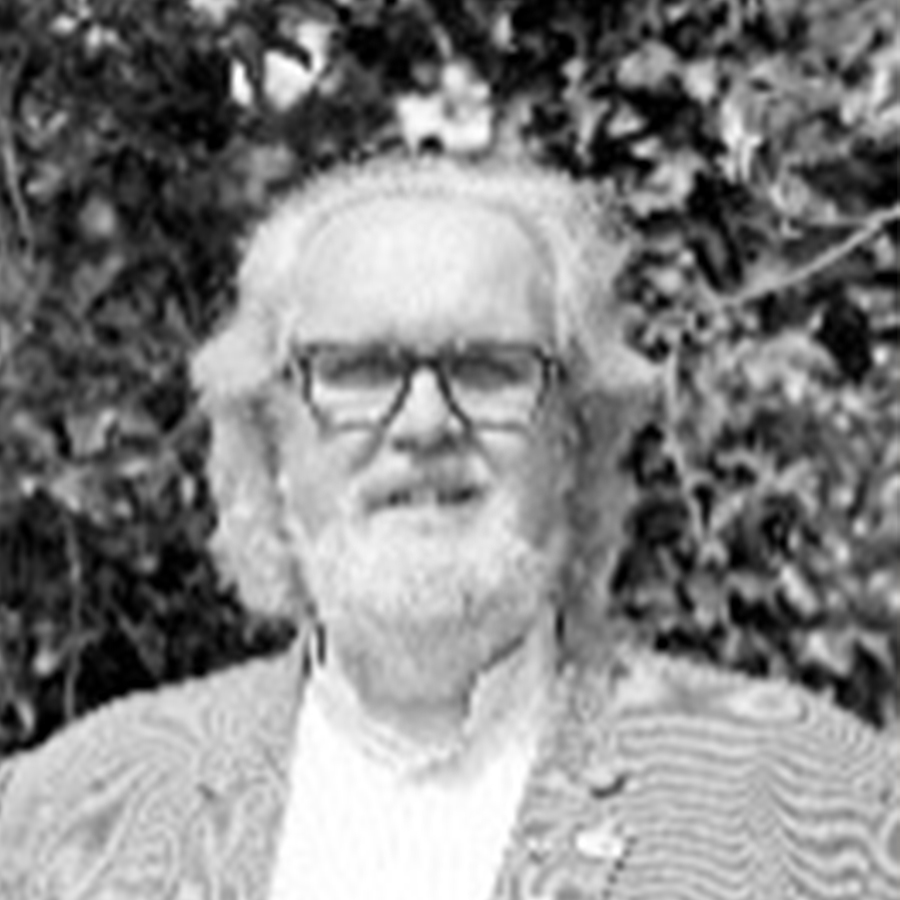
Peter Cox has a primary degree in chemical engineering and a masters in material science and has over thirty-five years international experience in the analysis of decay of masonry, the treatment of stone and mortar in conservation of historic buildings. Peter founded Carrig Conservation International Limited in 1993 to offer a science-based professional service to architects, engineers, surveyors, building owners, managers and state parties in the wider heritage sector from the 6th to the 20th century.
Peter is an expert in Embodied and Embedded Carbon in existing buildings since 2012 he has been President of the ICOMOS International Scientific Committee on Energy, Sustainability & Climate Change. In 2019 Peter was elected a fellow of the RSA for services to conservation and sustainability.
Peter has been an active member of ICOMOS Ireland for many years and is both a past vice president and president of ICOMSO Ireland. Peter is Immediate Past President of the ICOMOS “International Scientific Committee on Energy & Sustainability” (ISCES) including Climate Change.
Peter is a bureau member of the ICOMOS International Climate Change & Heritage Work Group and is a past member of the Work Group on the Sustainable Development Goals. Peter is also an active member of the Climate Heritage Network, a recently formed global organisation to highlight the threat of climate change. Peter is also a member of the bureau of ZNCC (Zero Net Carbon Collaborative). Peter was most recently a member of the ICOMOS ISC 20 C work group that published the “Cadiz Document” a guide to the conservation of early 20th century concrete buildings.
Peter sits on a number of international committees, working in particular with Governments to improve legislation and policies on conservation in general and on energy efficiency in our heritage and traditional building stock. Peter is also an active member of the STBA (Sustainable Traditional Building Alliance) in Britain.
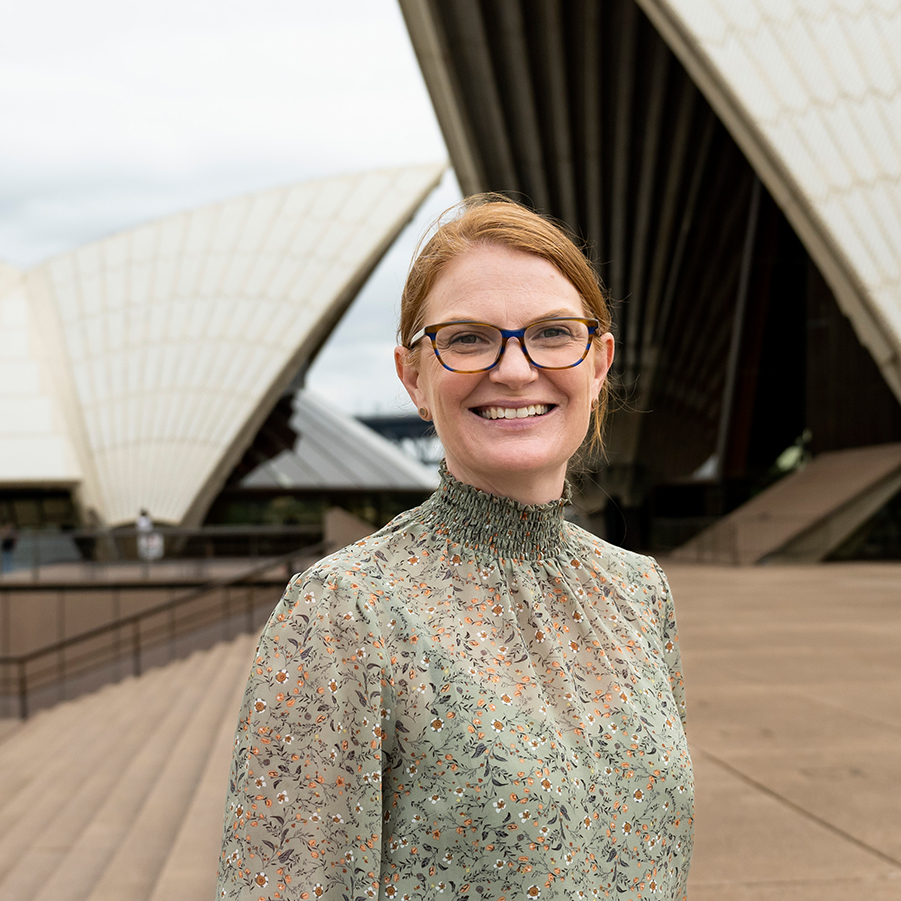
Emma Bombonato is driven by purpose and inspirational leadership in sustainability, with a passion for the role that both culture and cultural institutions play to support sustainable cities and communities. She has proven experience in strategic engagement, resource efficiency and building performance, project delivery and navigating the environment and climate risk management landscape.
Emma has an environmental science background and has many years of experience working in collaboration with people, businesses, organisations, and partners to help influence and bring about positive and sustained change. Emma’s role is to strategically support the implementation of the Opera House’s Environmental Action Plan and to help set the future direction of the program. Emma is the Chair of the City of Sydney’s Sustainable Destination Partnership leadership and a member of NSW Heritage Council Heritage Advisory Panel.
LIGHTENING ROUND SPEAKERS
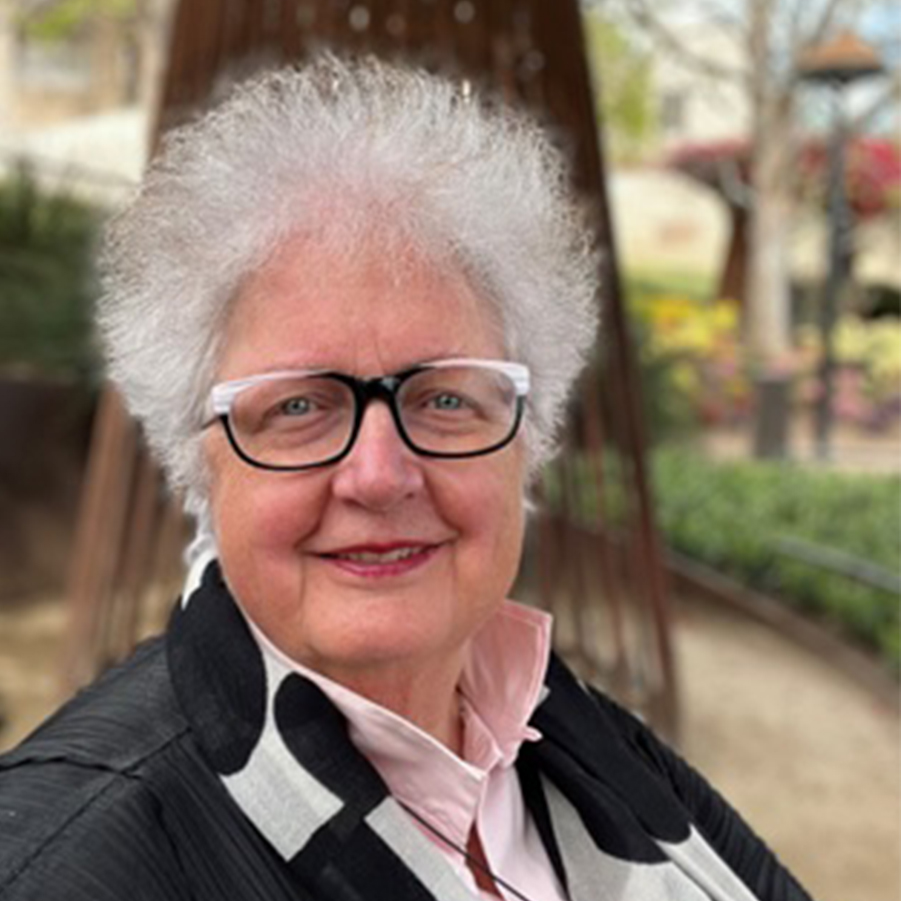
Sheridan Burke is a Sydney heritage consultant trained in planning and architecture. She has worked for government, corporates and NGOs. Twentieth Century heritage advocacy is her specialist field of interest, contributing to the development and delivery of the Keeping It Modern program with the Getty Conservation Institute in Los Angeles since 2014; the recent collaborative publication of the Twentieth Century Historic Thematic Framework and the current international course on the Conservation of Modern Architecture.
A long-term member of ICOMOS Australia, she has also served executive roles on its international Board and is currently a Scientific Council Officer, responsible for the ICOMOS Triennial Scientific Plan on Cultural Heritage and Climate Action. Sheridan was founding President of ISC20C and has previously also served as Secretary General.
Sheridan is an expert member of several NSW Planning Panels, the Sydney Opera House Conservation Council and its Design Advisory Panel. She is currently chair of the Eryldene Trust historic house and garden.
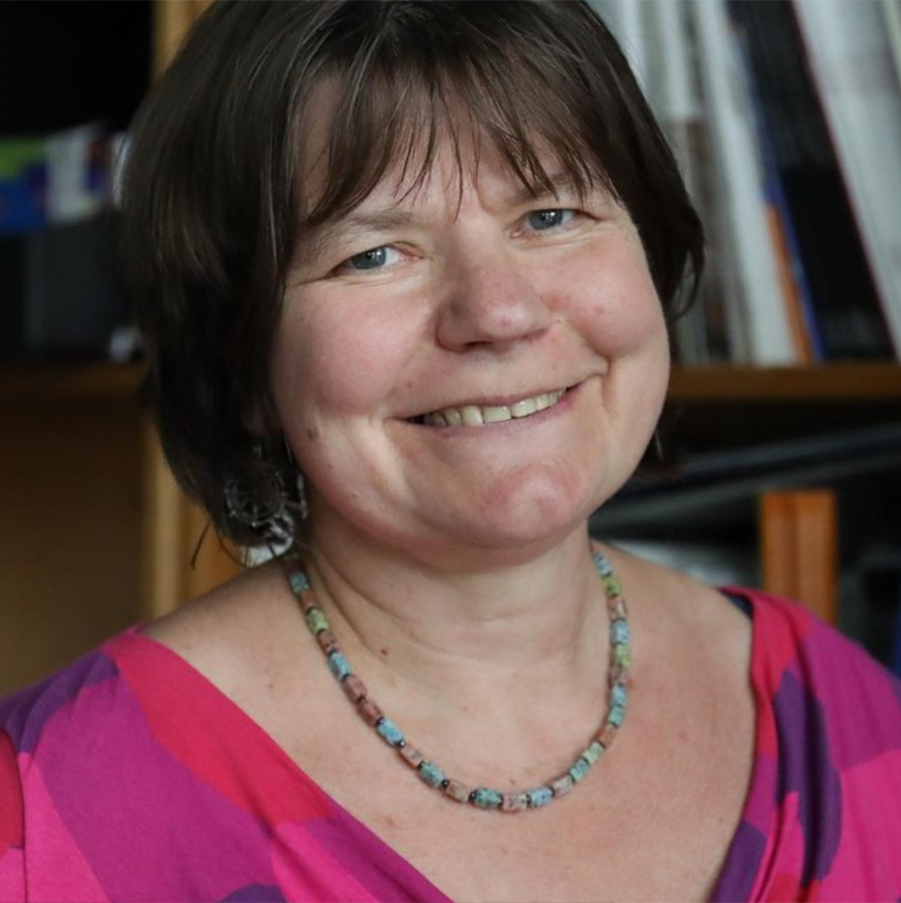
Riin Alatalu, Vice-President of ICOMOS; Associate professor of cultural heritage and conservation in Estonian Academy of Arts; coordinator of UNESCO chair in heritage studies in Estonian Academy of Arts; chairperson of Estonian Heritage Conservation Council; member of ICOMOS Rights-Based Approaches working group, CIVVIH, ICLAFI and ISC20C.
Alatalu has worked in National Heritage Board, Tallinn Culture and Heritage Department and Estonian Ministry of Culture in leading positions.
PhD: Heritage in Transitional Society from Nation’s Conscience in the Estonian SSR into the Harasser of the private Owner in the Republic of Estonia, 2012.
She has participated in several research projects. She is the author and co-author of several books and numerous articles on academic and popular level.
Alatalu has run several campaigns including Estonian National Cultural Heritage year in 2013, European Cultural Heritage Days, Visit Baltic Manors and other awareness raising activities. She has initiated cooperation with decision makers and wider audience.
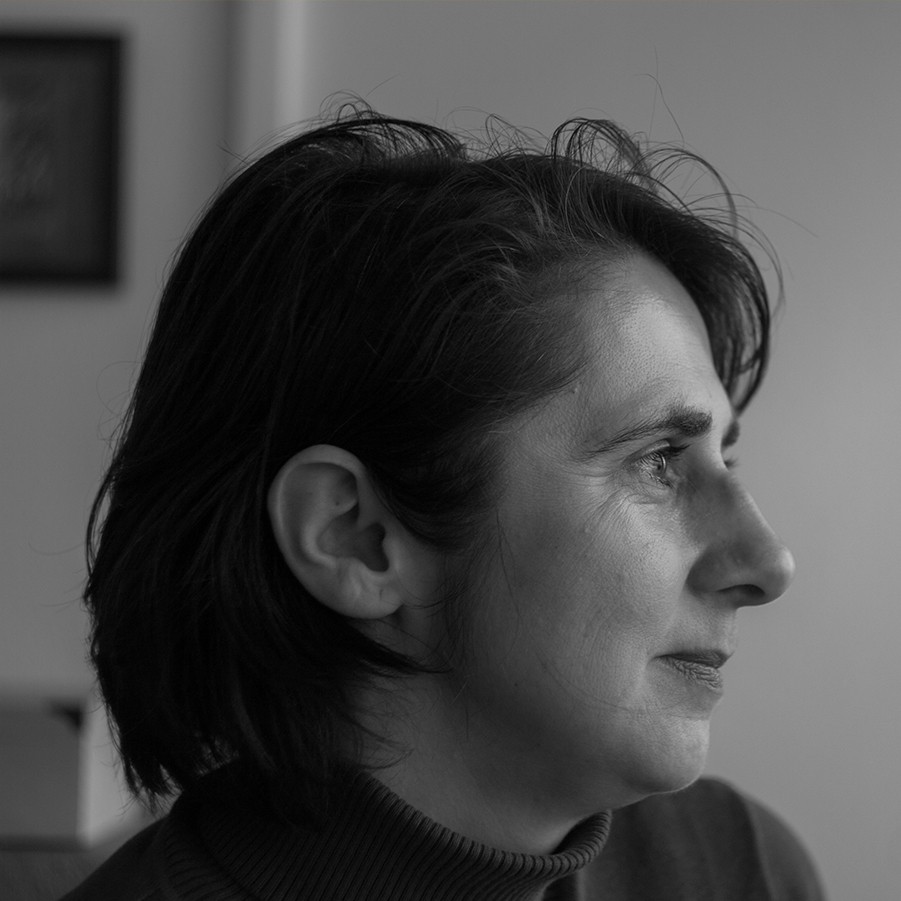
Elša Turkušić Jurić studied at the Faculty of Architecture in Sarajevo and at the Escola Tecnica Superior d`Arquitectura de Barcelona. She works as a Professor at the Department of Design at the Faculty of Architecture, University of Sarajevo. Her interest is focused on the housing, the 20th century architectural heritage, the contemporary architectural practices in the context of cultural and social tendencies. Since 2019, she launched an ongoing project of the architectural walking tours and mapping of the modern heritage in Sarajevo. Her latest publication is (V.Jerlagic co-author) is “Recreating the Future: Modern residential Neighbourhood and Existing Toponyms in Sarajevo” published in the book Place Naming, Identities and Geography, ed: G. O’Relly; Springer, 2023. She is a president of the ICOMOS national committee in Bosnia and Herzegovina, and an independent expert of the Mies van Rohe Award EU for Architecture.

Selma Karačević Kapić studied at the Faculty of Architecture in Sarajevo and further develops her skills at the Faculty of Economics of the University “Dzemal Bijedic” in Mostar with the focus on management of cultural tourism. She works as an expert advisor at the Cantonal Institute for the Protection of Cultural, Historical and Natural Heritage in Sarajevo. Since 2005, she has been working in the field of cultural heritage preservation, interpretation, spatial planning and heritage management.
Her latest projects are focused on development of heritage information system and upgrading the legislative framework for heritage protection and management in the area of Canton Sarajevo.
She is a member of the European Association for Heritage Interpretation and the Mixed Chamber Choir “Lola” in Sarajevo.

Federica Pompejano is a Building Engineer and a fixed-term researcher at the Department of Architecture and Design, University of Genova (UniGe) where she is implementing the research project “Landscapes of Industrial Production: Documenting and Assessing (post)Industrial Landscapes as Resources (Land-In-Pro)”. She holds a PhD, cum laude, in Preservation of Architectural Heritage (POLIMI, 2018). Her research interests are in the fields of architectural heritage preservation and landscape within which she aims at developing a critical approach that considers material culture and architectural technology aspects, heritage-making processes, and architectural historiography. Dr Pompejano held a Marie Skłodowska-Curie Action Individual Fellowship EU-H2020 Grant, leading the project “Materializing Modernity–Socialist and Post-socialist Rural Legacy in Contemporary Albania (MaMo)” at the Institute of Cultural Anthropology and Art Studies (Akademia e Studimeve Albanologjike), in Tirana, Albania.
Dr Pompejano teaches “Principles of Conservation”, Master’s degree course in “Architectural Composition” (UniGe). She is member of ICOMOS Italia, ICOMOS ISC20C, AIPAI, SIRA, ISCUM and ACHS.
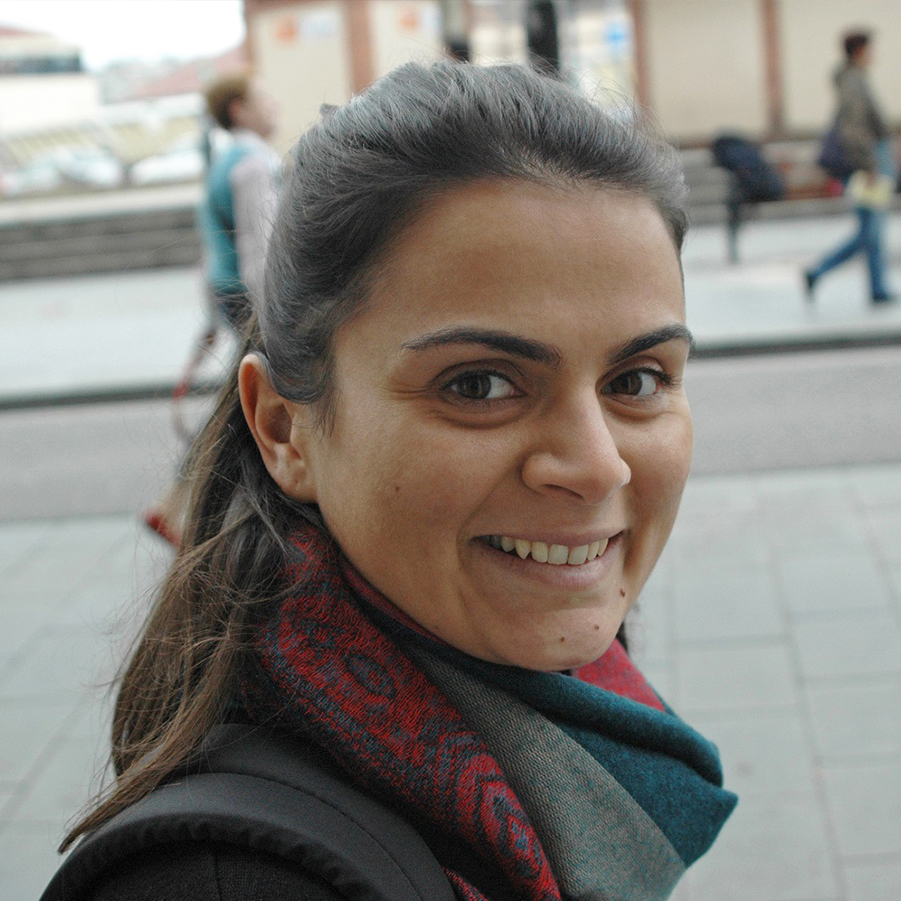
Stefania Landi holds a master’s degree in Building Engineering and Architecture and a Ph.D. in Architectural Restoration from the University of Pisa, where she is currently research fellow and lecturer. Her research interests concern the theoretical and technical aspects of architectural conservation and reuse, with particular attention to 20th century architecture and the conservation of reinforced concrete. As member of ICOMOS-ISC20C, she has been working in particular on the InnovaConcrete project, desktop reviews for the World Monuments Fund and Heritage Alerts. She has been visiting PhD student at the Getty Conservation Institute under the Conserving Modern Architecture Initiative, and visiting professor at the Silesian University of Technology, Poland. She is the author of several scientific articles and presented her research studies in international seminars and conferences on architectural conservation. She is executive bureau member of ICOMOS Italy, and member of the ICOMOS-Italy Scientific Committee on 20 Century.
KEYNOTE ABSTRACTS
Keynote 1: Conservation and the Climate Crisis Nexus
Global construction forecasts suggest new building at a rate equivalent of Japan’s entire floor area each year from now, to 2060. However, our dilemma is that Climate crisis demands us to reduce the embodied carbon impact of buildings by 50% against current approaches – now. Zoning, height and density rights combined with demand means that the value of land and development rights push building redundancy to something less than 40 years in CBD’s, making the economic returns of knock-down rebuild tantalising. Combined with the 2016 removal of Sydney CBD height restrictions, means that even those buildings with the most architectural merit, are now a threatened species. A situation replicated in most major global cities.
The structures and façades of our modern buildings constitute on average 25-35% or more of their total embodied carbon and materials footprint – with design lives of 50-100 years. The linear thinking of demand and construction is clearly unsustainable. With these facts in mind, the nexus between conservation and climate clearly emerges. If we contemplate the planning and regulatory changes necessary to rapidly decarbonise growth – then we should look to the conservation mechanisms of re-use and retention as high impact, rapidly deployable options of importance to national and global climate policy.
In this session we will look at the relationship of global construction and climate change, the embodied carbon impacts of building types and components, the carbon value of retention, and review a sample of recent adaptive reuse projects and the contribution to carbon mitigation. Within this context – explore the urgent and desirable areas of conservation linked climate policy and research.
Keynote 2: Can Early 20th Century Buildings Contribute to Carbon Reductions
Peter will explain the importance of a science led approach to understanding the real-life performance of early 20th century concrete buildings in analyzing the building fabric, true U Values and other technically important information such as hygroscopic properties of individual buildings. This technical information is essential to fully understand how your building will perform which will inform the best solutions on how to conserve and energy retrofit an early 20th century concrete building to best practice and best efficiency.
Early concrete buildings generally incorporate the 3 top CO₂ Polluters – Cement, Steel & Glass so if they are demolished it is the loss of “Embodied Carbon” and then replaced with “Carbon Intensive New Buildings” it could take up to 100 years to repay the carbon cost.
Peter will cover some of the research Carrig have been at the forefront in conserving our heritage buildings whilst calculating the negative carbon cost of conserving and doing sensitive energy retrofits using low carbon solutions and renewable energy.
Most current calculations of “A” rated relates to the operational energy on new buildings whilst ignoring the embodied carbon or the carbon intensive methods of new construction.
Peter will call for a move towards a “Carbon Fine for Demolition” and a “Carbon Credit” for retention and adaptive reuse of our older buildings.
Keynote 3: Environmental Sustainability at the Sydney Opera House
The Sydney Opera House is an architectural masterpiece, internationally recognised icon of Australia, and a pre-eminent performing arts centre. Conceived by Danish architect Jørn Utzon, the Opera House was realised by the collective creativity of engineers, builders and architects and opened in October 1973. Its cultural heritage significance, based on its twin roles as an architectural monument and a dynamic, world-class performing arts centre, was formally recognised and protected through registration on the State Register (2003), Australian National Heritage List (2005) and the UNESCO World Heritage Register (2007).
Environmental sustainability and heritage conservation intersect as part of the ongoing day-to-day and strategic management of the Opera House. By ensuring longevity of the site through improved environmental performance, the Opera House and its heritage values will be conserved and sustained for future generations to enjoy. This paper outlines mitigation and adaptation measures developed and implemented by the Opera House over the past two decade to address climate change through reducing emissions and responding to climate risks whilst conserving the site’s cultural heritage significance.
LIGHTENING ROUND ABSTRACTS
Living Climate Action at Eryldene
Eryldene is a Twentieth Century heritage listed house and garden of horticulturally significant camellias, run by volunteers as a community Trust in Sydney. To re-build its organisational resilience after the Covid pandemic, and recognising the increasing impacts of climate change, the Eryldene Trust initiated a renewal and resilience plan in 2021.
An Eryldene Climate Risk Register for the house and garden was developed by a group of volunteers (with expert advice), and an Eryldene Sustainability Action Plan 2022-25 consequently identified the necessary changes in day to day activities of volunteers and prioritised longer term planning needed to improve its resilience and refocus aspects of preventive maintenance planning and public event management practice.
Eryldene is engaging globally with gardens from the USA, UK and elsewhere in Australia to share experiences in conserving Historic Gardens in response to Climate Change.
Sheridan Burke, Chair Eryldene Trust.
Note: GA Tours are visiting Eryldene on 2nd September and ISC20C day tour on 1st.
The European Building Performance Directive and historical buildings
The consultations on the amendments to the EBPD have opened discussions on how to direct the goals to achieve energy efficiency may have potential impact on historical building stock. The presentation is a short overview of the discussions held in the Europe group and the planned guidance for National Committees to support them in the implementation of the directive on national level.
Aesthetics of Uniformity – Case studies on the Transformation of the 20th century Public Buildings
The topic of this paper is the analysis of the consequences of the transformation of 20th century public buildings and their immediate urban environment, caused by the implementation of energy efficiency project. The work starts from the knowledge that this project extends the life of buildings by a couple of decades, reduces current maintenance costs and changes internal comfort. At the same time, the external appearance, the character of the building and its surroundings, the role of the building in the collective memory and image of the city are changing.
The rezentation uses the guidelines of “The 20th century Historic Thematic Framework” to indicate the cultural values of public buildings that do not have the status of protected property. Two objects in Sarajevo, UKCS Traumatology Clinic (B.Bunić, 1984) and Municipality Ensemble ” Stari grad” (Z.Broz, 1980), that were transformed after the implementation of the energy efficiency project will be presented as case studies.
(Post)Industrial Heritage and Landscapes: Resources between Conservation and Transformation
The conservation and management of modern architectural heritage and landscape dilemma has been a pivotal discourse since the last decades of the 20th century. In this scenario, industrial heritage has become an important field of thinking about the effects of climate change, increasing its importance whilst seeking to embrace urban planning and socio-economic sustainable development perspectives in an integrated strategy towards a conscious conservation/transformation approach. In this view, the (post)industrial heritage and landscapes should be addressed not as relics of the past, but as local resources for the future able to trigger conscious transformation that create liveable and sustainable places for their communities.
Beyond its tangible manifestation as cultural heritage, industrial heritage and landscapes are a contested issue in land management and architectural and urban planning as well as in cultural heritage and socio-economic policies. Industrial heritage and landscapes were once both useful and polluting, and today their meaning is also that they are signs of human successes and failures.
Most European countries face the challenge of protecting their architectural and historical values while adapting/transforming industrial heritage sites and buildings that lie abandoned in the territory. Most of them despite encompassing architectural, historical, and technological values are not considered as heritage. The question of how to assess and what to do with them is highly relevant to present-day. The present global approach advocates to move beyond existing regulatory/management frameworks, suggesting a revision of local urban planning governance practices and safeguarding policies to adapt to climate change challenges whilst reconciling heritage conservation and development initiatives. In this sense, the (post)industrial heritage potential value in terms of sustainable transformation and adaptive re-use is strongly connected to their regional and local ecological, economical, and socio-cultural key challenges, such as the promotion of local identity, the integration of cultural heritage conservation and adaptive re-use policies and strategies into urban planning and landscape governance tools, the regeneration and improvement of blue and green infrastructures, the upgrade or boosting of regional sustainable economies. The purpose of this contribution is to introduce the research project “Landscapes of Industrial Production: Documenting and Assessing (post)Industrial Landscapes as Resources”. Land-In-Pro focusses on the tangible and intangible legacy left by the 20th century (de)industrialization processes in the landscape of the Liguria region in Italy, taken as a case study, envisioning it as a living testimony of the past and a potential resource for a sustainable and resilient future. Land-In-Pro intends to explore, document, and assess the legacy of the (de)industrialization processes, to generate significant knowledge around (post)industrial landscapes resilience, through a interdisciplinary approach encompassing landscape and heritage studies, ethnographic methods, and spatial analysis.
Climate Change and 20 Century Architectural Heritage: Crossing Existing Tools and Developing a Methodological Approach for Risks Identification in Italy
This contribution sets out the preliminary considerations of a recently started research project aimed to identify the risks connected to climate change for 20th century architectural heritage in Italy, by systematising the existing tools and data on climate change, risks maps for cultural heritage, and 20th heritage inventories in the Italian context, which conceived as a starting point for the development of a research methodology with a strongly interdisciplinary character, applicable to other geographical contexts. The ultimate objective of this research is to identify specific types of 20th century assets subject to different risks, in order to support the development of dedicated strategies for monitoring, preventive conservation and adaptation to risks, with reference to both the site and its context.
Based on the ICOMOS document ‘Future of our past’, the ‘climate impacts’ considered for the Italian context will be especially: coastal flooding, sea level rise, increase in temperature, change in freeze/thaw cycles, increase in humidity, increase in intensity and/or frequency of storms, more extreme precipitation. The specific deterioration mechanisms identified in the ICOMOS document for the category “Buildings and structures” will be analysed and deepened considering the fact that, among the most widespread 20th century construction techniques, we find reinforced concrete, steel structures and steel-and-glass components.
